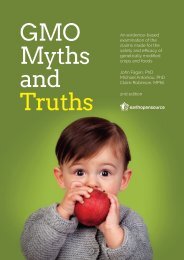1923%20Memoir%20on%20Maps%20of%20Chinese%20Turkistan%20by%20Stein%20s
1923%20Memoir%20on%20Maps%20of%20Chinese%20Turkistan%20by%20Stein%20s
1923%20Memoir%20on%20Maps%20of%20Chinese%20Turkistan%20by%20Stein%20s
Create successful ePaper yourself
Turn your PDF publications into a flip-book with our unique Google optimized e-Paper software.
~ec, vi.] THE PRI-RHAN AND EASTERNMOST T'IEN-SHAN 65<br />
It is only at the foot of these sections that cultivation to any appreciable extent is<br />
found. The easternmost of thom ifi the Karlik-tigh ('The Snowy<br />
~arlik-Liph and<br />
Hiuri oasis. Mountir~s'), and the irrigation derived from itn snows accoclnts for th(?<br />
thin sf.rin:: of oases along its ~outhern slopes. 8 ThoRe in the east about<br />
T~sh-bulak and Jihotl1rr-tam arc small. But Himi or Kurnul (Sheat No. 34. C,D. 8) is<br />
larger and clairl~s importance as its a::ricultural resources make it the northern hridge-tied,<br />
as it mere, of the road fro111 A~l-hsi which, ever since the ancient route into the THrim basin<br />
"ic~ Lou-Ian had to be abandoned, has served as the main artery of trade and traffic between<br />
China and Central Asia. ' Here, as everywl~ere alon~ the southern slopes of the Eastern<br />
Tien-shan, irrigation is chiefly supplied by the subsoil drainage from the ranqe gathering<br />
in springs at the foot of the absolutely barren gravel<br />
surplus water, which does not percolate into the soil, or which at the time of spring<br />
and summer floods escapes evaporation on the surface, makes its way<br />
,rerminnl httsin of<br />
SI,OO,I-II~IT. down into a terminal basin, known as Shona-n6r, usuallp quite dry.<br />
The Meea formations which surround this and some adjoininz smaller<br />
basins occasionally reached by floods from the range further west, 6 distinctly recall a eharacteristic<br />
feature of the ground near the ancient terminal basins of the Su-lo-ho and the tlriedup<br />
Lop sea.<br />
continuing further alonfi the southern slopes of the T'ien-shan wecome to the oases of<br />
Lapchuk-Kara-dobe where cultivation of some extent is maintained hv<br />
s ~Iopes of T,ien-sLno. subsoil drainaze from the snowy part of tl,e range ahove Barkul. Be-<br />
. .<br />
yond them the only route westwards practicable for caravans at the<br />
present time hugs closely the foot of the mountains. Rut nowhere is cultivation possible<br />
after leaving the slopes of the Barkul portion of the range until, after travelling some 150<br />
miles, the vicinity of the Turfgo basin is reached at Chik-tam. The separate small region<br />
by that basin has already received notice above.<br />
Turning now to the opposite slopes of the Easkm TLien-shan we recopize there<br />
conditions which clearly reflect the influence of a different climate. It<br />
Cliruete of Dznngaria. is that of the wide plateaus of Dzungaria stretching. northward as far<br />
as the Altai mountains and southernmost Siberia. The abundant<br />
grazing grounds, which moisture drawn from the north provides in Dzungaria, have at all<br />
times attracted there waves of nomadic nations, from the Huns to the Mongols. This moister<br />
climate affects the whole length of the northern slopes of the main TLien-shan in spite of<br />
intervening ranges and of thedrift-sand areas met with further west. In the extreme east of<br />
the range, around Bai, we find indeed a glacis of gravel as bare as that on the slopes to<br />
the south. But proceeding further west we come to plentiful grazing along the north of the<br />
Karlik-Ggh, and from the far side of the Tor-k6I lake conifer forest clothes the higher<br />
slopes as far as Barkul and beyond. 7<br />
The perpetual snowbeds on this portion of the ranKe povide ample irrigation for the<br />
wide grassy valley which stretches down to the town of Barkul and its<br />
T'isn-shan slopes W.<br />
or narku~. lake, and only scarcity of mainly due to political vicissi-<br />
tudes, stands in the way of far more extensive cultivation. West of<br />
Barkul the crest of the range sinks below the level of perpetual snow, and the amount of<br />
water descending its slopes is correspondingly much reduced. Yet sprinqs and small patchen<br />
of cultivation are to be found all along them, until near Mu-li-ho the route takes us to the<br />
foot of that high snomy portion of the range which divides the Turfirn basin from the fertile<br />
tracts about Guchen.<br />
Cultivation in the vicinity of this large town and in that of the ruined site of Pei-Ping,<br />
Cultivation near<br />
Gnclben.<br />
' Yee Sheets Nos. 34 A 2. 3; 97. A. 2,3.<br />
* Cf. Serindin, iii. pp. 1147 899.<br />
6 See Bheets Nos. 31, D. 3; 34. A. 3.<br />
* Bee Bheet Nu. 87. B. C. 2<br />
the ancient capital of the territory, is not restricted to the amp])<br />
watered alluvial fans, but is also carried on without ~rrigation over ex<br />
tensive ground; immediakly,adjacent-to the belt of forest on the<br />
7 See Sheet No. 34. A. B. 1, C, D. 2.<br />
* Bee Sheet No. 34. B. C. 1.<br />
Bee Sheet. Xo. 31. A. 1; 28. 0. D. 1.






